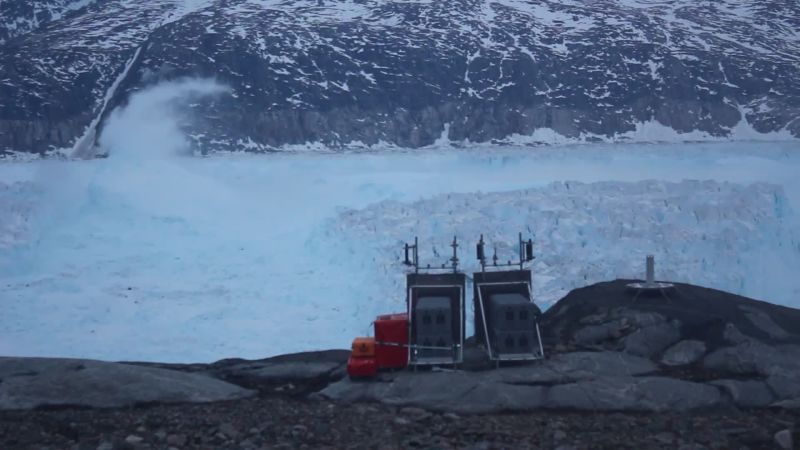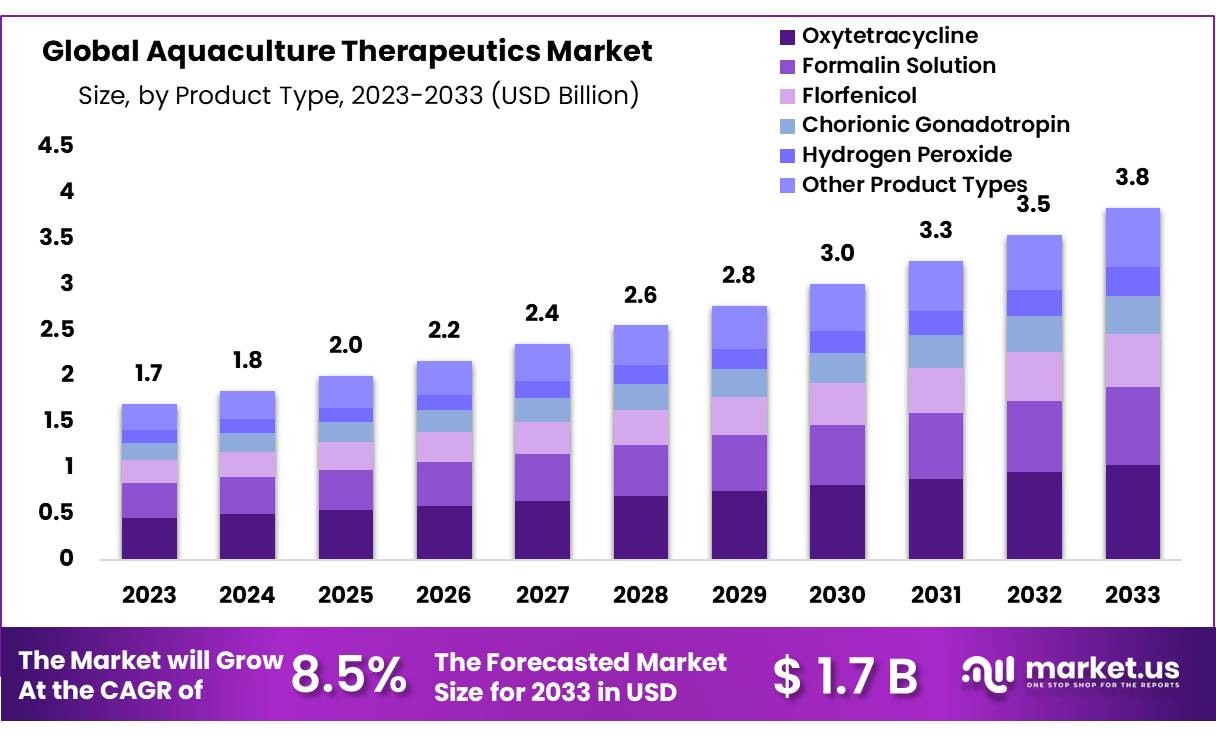NASA Supercomputers Reveal the Impact of Greenland’s Melting Glaciers on Marine Life – The Daily Galaxy

Report on Glacial Meltwater’s Impact on Arctic Marine Ecosystems and Alignment with Sustainable Development Goals
A recent study provides critical insights into the effects of Greenland’s retreating ice sheet on marine ecosystems, directly addressing key United Nations Sustainable Development Goals (SDGs). Research supported by NASA and utilizing advanced computational models has quantified how glacial meltwater influences the marine food web, highlighting the urgent need for global cooperation and technological innovation to mitigate climate impacts. The findings underscore the interconnectedness of climate action, marine biodiversity, and scientific partnership.
Addressing SDG 13: Climate Action Through Advanced Arctic Research
The study’s primary focus is on understanding the direct consequences of rising global temperatures, a central objective of SDG 13 (Climate Action). By examining one of Earth’s most significant ice sheets, the research provides tangible evidence of climate change’s cascading effects.
Quantifying the Impacts of Climate Change
- The research investigates the alarming retreat of the Greenland ice sheet, a direct consequence of global warming.
- It simulates the physical dynamics of glacial melt, linking rising temperatures to profound changes in the Arctic environment.
- The study provides data-driven models that are essential for predicting future climate scenarios and informing policy decisions aligned with SDG 13.
Fostering SDG 14: Life Below Water Through Ecosystem Analysis
The report details how changes in the cryosphere directly impact marine life, a core concern of SDG 14 (Life Below Water). The study focuses on phytoplankton, the foundational organisms of the marine food web, to assess the health and productivity of the Arctic Ocean.
The Role of Phytoplankton in Marine Health
Phytoplankton are critical to marine ecosystems and global climate regulation. Their functions directly support the targets of SDG 14:
- They form the base of the marine food web, sustaining populations of krill, fish, and marine mammals.
- As carbon sinks, they absorb atmospheric CO2, contributing to climate mitigation efforts (SDG 13).
- A documented 57% increase in Arctic phytoplankton from 1998 to 2018 suggests significant, rapid changes in marine productivity.
Impact of Nutrient Upwelling on Marine Productivity
The study reveals a complex mechanism where glacial melt enhances biological productivity. This process, while seemingly beneficial, signals a fundamental disruption of the marine environment.
- Rapid ice melt from glaciers, such as the Jakobshavn Glacier, releases immense volumes of buoyant freshwater into the ocean.
- This freshwater circulation draws nutrient-rich deep ocean water, containing iron and nitrate, to the sunlit surface layers.
- These nutrients act as a fertilizer, fueling massive phytoplankton blooms, with simulations projecting a 15-40% increase in growth near major glaciers.
While this nutrient influx may temporarily boost the food web, the long-term consequences for marine biodiversity under continued warming and ocean acidification remain a critical area for further research under the SDG 14 framework.
Leveraging SDG 9 and SDG 17: Innovation and Partnerships for Global Solutions
The success of this research hinges on technological innovation and collaborative partnerships, reflecting the principles of SDG 9 (Industry, Innovation, and Infrastructure) and SDG 17 (Partnerships for the Goals).
Technological Innovation in Climate Science (SDG 9)
Advanced scientific infrastructure was essential for modeling the complex Arctic system. The study utilized:
- The Estimating the Circulation and Climate of the Ocean-Darwin (ECCO-Darwin) model, a highly sophisticated tool for simulating ocean ecosystems.
- NASA’s supercomputing facilities at Ames Research Center, which enabled the processing of vast datasets covering decades of oceanic measurements.
- This application of high-performance computing demonstrates the critical role of technological innovation in achieving environmental SDGs.
Collaborative Partnerships for Scientific Advancement (SDG 17)
The project exemplifies a successful multi-institutional partnership, a key component of SDG 17. The collaboration involved:
- NASA
- The Jet Propulsion Laboratory (JPL)
- The Massachusetts Institute of Technology (MIT)
This joint effort combined resources and expertise to tackle a problem of global significance, proving that international and cross-sectoral cooperation is vital for effective climate research.
Global Applicability and Future Outlook
The computational tools developed are not limited to Greenland. As lead author Michael Wood noted, the model is a versatile “Swiss Army knife” applicable to diverse regions, from the Texas Gulf to Alaska. This adaptability ensures that the innovation can be scaled to monitor and protect marine ecosystems worldwide, supporting the global implementation of the Sustainable Development Goals. Future plans to extend simulations across the entire Greenland coast and beyond will provide invaluable data for global climate and marine conservation strategies.
Analysis of Sustainable Development Goals (SDGs) in the Article
1. Which SDGs are addressed or connected to the issues highlighted in the article?
- SDG 9: Industry, Innovation and Infrastructure
- SDG 13: Climate Action
- SDG 14: Life Below Water
- SDG 17: Partnerships for the Goals
2. What specific targets under those SDGs can be identified based on the article’s content?
SDG 9: Industry, Innovation and Infrastructure
- Target 9.5: Enhance scientific research, upgrade the technological capabilities of industrial sectors in all countries, in particular developing countries, including, by 2030, encouraging innovation and substantially increasing the number of research and development workers per 1 million people and public and private research and development spending.
The article extensively details the use of “advanced computational tools,” “supercomputers at NASA’s Ames Research Center,” and a sophisticated ocean model called “ECCO-Darwin.” This represents a significant effort in enhancing scientific research and leveraging advanced technological capabilities to understand complex environmental systems. The development of these tools, which are described as a “Swiss Army knife” applicable to various regions, directly supports the goal of upgrading technological capabilities for scientific purposes.
SDG 13: Climate Action
- Target 13.1: Strengthen resilience and adaptive capacity to climate-related hazards and natural disasters in all countries.
The study focuses on the “alarming rate” of Greenland’s ice sheet retreat due to “warming temperatures.” By simulating and predicting the ecological consequences of this melt, the research helps build an understanding necessary to anticipate and adapt to the impacts of climate-related hazards on marine ecosystems. - Target 13.3: Improve education, awareness-raising and human and institutional capacity on climate change mitigation, adaptation, impact reduction and early warning.
The research itself is a primary tool for improving institutional capacity and raising awareness. The study provides “crucial insights into how warming temperatures and increased ice melt are driving changes in the Arctic,” which can inform policy and public understanding of climate change impacts. The plan to extend simulations to the entire Greenland coast and other regions further contributes to this target.
SDG 14: Life Below Water
- Target 14.2: By 2020, sustainably manage and protect marine and coastal ecosystems to avoid significant adverse impacts, including by strengthening their resilience, and take action for their restoration in order to achieve healthy and productive oceans.
The article’s central theme is the effect of glacial meltwater on the “marine food web” and “ocean ecosystems.” It investigates how changes in nutrient availability affect phytoplankton, which are the “foundation of marine food webs.” Understanding these dynamics is a critical first step toward managing and protecting these vulnerable coastal ecosystems from the adverse impacts of climate change.
SDG 17: Partnerships for the Goals
- Target 17.6: Enhance North-South, South-South and triangular regional and international cooperation on and access to science, technology and innovation and enhance knowledge-sharing on mutually agreed terms…
The research is a collaborative effort involving multiple prestigious institutions, including “NASA,” the “Jet Propulsion Laboratory (JPL),” and “MIT.” This partnership demonstrates international cooperation in science and technology to address a global challenge. - Target 17.7: Promote the development, transfer, dissemination and diffusion of environmentally sound technologies to developing countries on favourable terms, including on concessional and preferential terms, as mutually agreed.
The computational model developed is described as being “adaptable to various regions of the world,” not just Greenland. The lead author’s statement that “Our approach is applicable to any region, from the Texas Gulf to Alaska” implies the potential for disseminating this technology to help other regions assess climate impacts, aligning with the goal of technology diffusion.
3. Are there any indicators mentioned or implied in the article that can be used to measure progress towards the identified targets?
Indicators for SDG 9 & SDG 17
- Development and application of advanced scientific models: The creation and use of the “Estimating the Circulation and Climate of the Ocean-Darwin (ECCO-Darwin)” model serves as a direct indicator of enhanced scientific research capabilities (Target 9.5).
- Collaborative scientific publications and projects: The study itself, published in Nature Communications: Earth & Environment and involving NASA, JPL, and MIT, is an indicator of successful international partnerships in science and technology (Target 17.6).
Indicators for SDG 13
- Rate of glacial retreat: The article mentions Greenland’s ice sheet is “retreating at an alarming rate,” which is a key indicator of climate change impact (Target 13.1).
- Predictive modeling of climate impacts: The use of simulations to project future changes in the Arctic ecosystem is an indicator of improved capacity for impact reduction and early warning (Target 13.3).
Indicators for SDG 14
- Phytoplankton growth rate: The article provides a specific metric: “an increase of about 57% between 1998 and 2018.” The simulation also predicted a potential “increase [in] phytoplankton growth by 15-40%” near the Jakobshavn Glacier. This serves as a direct indicator for monitoring the health and productivity of marine ecosystems (Target 14.2).
- Nutrient concentration in marine environments: The study links phytoplankton growth to the release of “essential nutrients, like iron and nitrate,” from glacial melt. Measuring these nutrient levels can be an indicator of changes in the marine ecosystem (Target 14.2).
4. Summary Table of SDGs, Targets, and Indicators
| SDGs | Targets | Indicators |
|---|---|---|
| SDG 9: Industry, Innovation and Infrastructure | 9.5: Enhance scientific research, upgrade the technological capabilities… | Use of advanced computational tools like the ECCO-Darwin model and NASA’s supercomputers to conduct research. |
| SDG 13: Climate Action | 13.1: Strengthen resilience and adaptive capacity to climate-related hazards. 13.3: Improve education, awareness-raising and human and institutional capacity on climate change… |
The “alarming rate” of ice sheet retreat. The development of predictive simulations to understand and forecast the impacts of melting glaciers. |
| SDG 14: Life Below Water | 14.2: Sustainably manage and protect marine and coastal ecosystems to avoid significant adverse impacts… | The measured 57% increase in phytoplankton growth (1998-2018). The simulated 15-40% increase in phytoplankton growth. The transport of nutrients (iron, nitrate) into surface waters. |
| SDG 17: Partnerships for the Goals | 17.6: Enhance… international cooperation on and access to science, technology and innovation… 17.7: Promote the development, transfer, dissemination and diffusion of environmentally sound technologies… |
The research collaboration between NASA, JPL, and MIT. The adaptability of the computational model for use in other global regions (“Like a Swiss Army knife”). |
Source: dailygalaxy.com

What is Your Reaction?
 Like
0
Like
0
 Dislike
0
Dislike
0
 Love
0
Love
0
 Funny
0
Funny
0
 Angry
0
Angry
0
 Sad
0
Sad
0
 Wow
0
Wow
0



























;Resize=805#)











































;Resize=620#)








